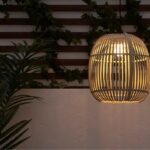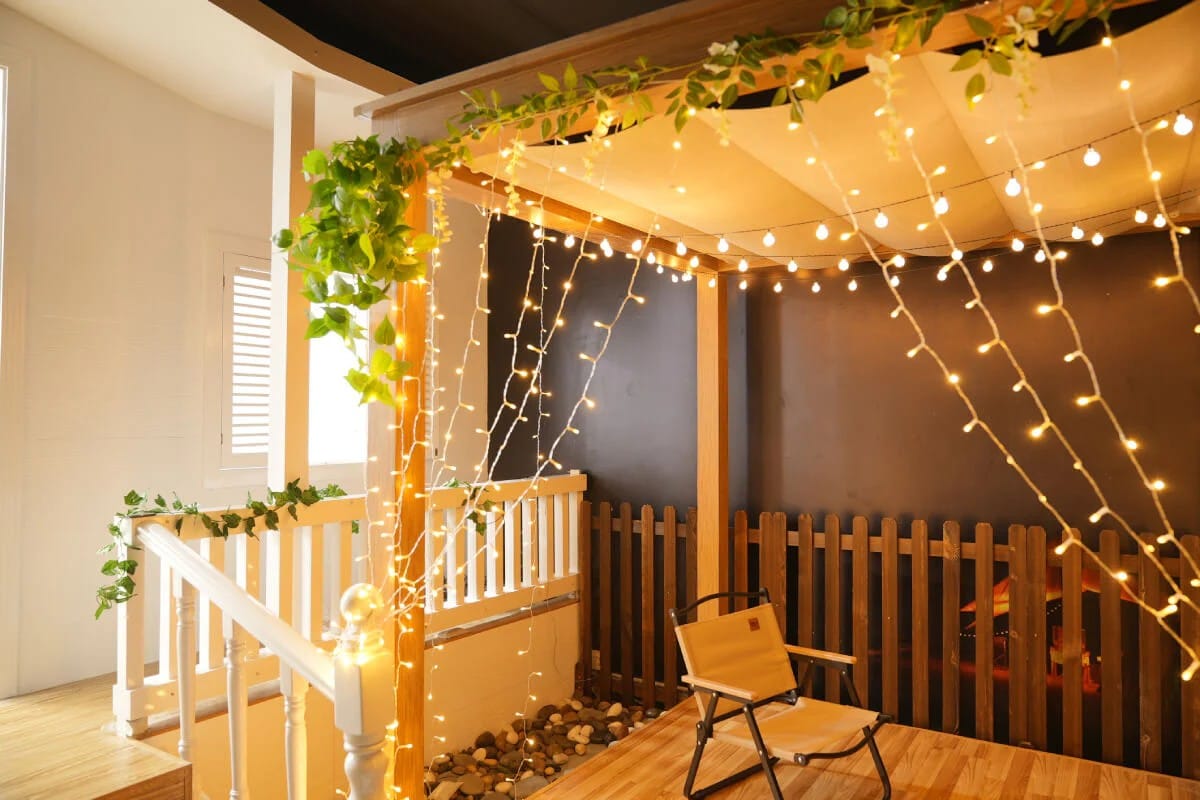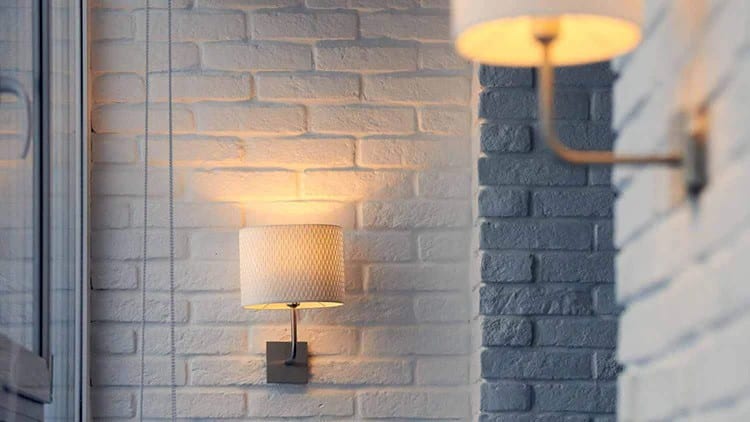
Decorative Wall Lights in UAE: Best & Worst Options & Placements in 2025
Let’s talk now about decorative wall lights. They’re not just about flipping a switch anymore.
Today, these fixtures are key players in any house or villa in Dubai as they add layers of ambiance and a touch of personal flair that can truly elevate a space.
For savvy homeowners, understanding the nuances of decorative wall lighting isn’t just about aesthetics, indeed!
It’s about making smart investments that enhance both the livability and the potential resale value of their property.
Think of them as the jewelry of your interior design.
They can highlight architectural details, showcase prized possessions, and set the mood for everything from a cozy evening to a sophisticated soiree.
But with dazzling options available, how do you discern the brilliant choices from the ones that will leave you in the dark?
Why Decorative Wall Lights?
The market for decorative wall lights is as diverse as the homes they illuminate!
The world of decorative wall lights is rich and varied, with really amazing options to suit diverse tastes and functional requirements.
However, proper installation and spacing of decorative wall lights are crucial for achieving optimal illumination and visual harmony within a space.
As a general rule, place the center of the fixture at eye level, which typically falls between 60 and 72 inches (5 to 6 feet) from the floor.
This height can be adjusted based on ceiling height and individual preferences.
When installing multiple wall lights, a general guideline is to space them approximately 8 to 10 feet apart to ensure a balanced distribution of light.
Thus, understanding the fundamental types of these fixtures is the first step towards making informed choices that will best complement your space.

Types of Decorative Wall Lights
The world of decorative wall lights includes options like wall sconces and LED strip lights, which are perfect for creative mood lighting in many residential buildings in Dubai and Abu Dhabi.
Understanding these diverse types or styles of these light options is key to selecting the right fixtures to enhance your home’s style and functionality.
Knowing the fundamental categories is your first step in making informed decisions that align with your design goals and budget.
Wall Sconces
Wall sconces are the workhorses of decorative wall lighting, mounted directly to the wall to provide ambient, accent, or even task lighting.
Their versatility is unmatched, with styles ranging from the elegance of traditional designs featuring warm metallics to the sleek minimalism of modern options in metal or glass.
For instance, the rustic sconces, often incorporating wood and iron, bring a touch of warmth to more casual spaces.
For tight spaces like hallways, flush-mount sconces offer a low-profile solution, while armed sconces provide adjustable light direction.
Lantern-style sconces evoke a timeless charm, suitable for both indoor and outdoor settings. Whether you’re aiming to create a cozy reading nook or add a touch of sophistication to a hallway, the right sconce can make all the difference.
Picture Lights
For homeowners who appreciate art and want to showcase their collections, picture lights are an essential investment.
These focused lights are designed to illuminate artwork and photographs to show their real colors and details.
Available in various finishes, they should integrate into any well-designed space on your wall.
Swing Arm Lights
Swing arm lights come with great levels of style and practicality, which makes them a smart choice without sacrificing valuable surface space.
Their adjustable arms allow you to direct light precisely where it’s needed, whether beside a bed for reading or above a desk for focused work.
This flexibility makes them a valuable addition to bedrooms, home offices, or even living rooms.
Up & Down Lights
Up and down lights provide a dynamic lighting effect by casting light both upwards and downwards along the wall.
This dual illumination not only provides general light but also enhances the ambiance of a room to feel both larger and more inviting.
They are suitable for various rooms, including kitchens, living rooms, bedrooms, and even outdoor architectural spaces.
Flush-Mount Wall Lights
In areas where space is at a premium, flush-mount wall lights offer an efficient and stylish solution.
These compact fixtures sit close to the wall with ample light to otherwise dimly lit areas like kitchens, hallways, and smaller bedrooms.
Their unobtrusive design makes them a practical choice without compromising on style by any means.
Lantern Wall Lights
Lantern wall lights bring a touch of classic elegance and often a hint of rustic charm to a home.
Their design, reminiscent of traditional lanterns, makes them versatile for both indoor and outdoor use, adding a unique aesthetic element to various architectural styles.
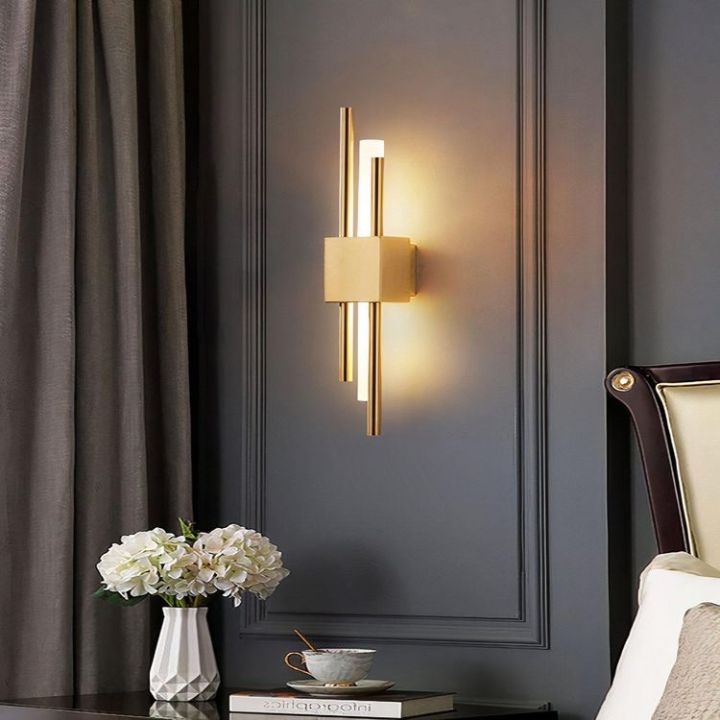
Where to Place Decorative Wall Lights?
Placing decorative wall lights hinges not just on the fixtures themselves, but on their strategic placement.
Living Room
In your living room, wall lights offer a multitude of possibilities.
Placing them at eye level can create a welcoming and flattering ambiance for guests.
To showcase artwork, position lights directly above or to the sides of the pieces.
Swing arm lights are ideal for reading nooks or near desks, providing focused task lighting.
Don’t overlook, however, the impact of artistic wall lights with colorful shades on empty walls for both light and visual interest.
For a balanced and cozy atmosphere, consider placing two wall lights on either side of a focal point like a fireplace or television.
Bedroom
In a bedroom, wall lights can create a serene and inviting atmosphere.
Bedside wall lights are a smart alternative to table lamps to free up valuable nightstand space.
For avid readers, mounting swing arm lights at shoulder height when seated in bed provides optimal illumination.
Hallway
Hallways often benefit significantly from decorative wall lights for illumination and a better sense of space.
A general guideline is to place wall lights at eye level, typically between 60 and 72 inches from the floor.
In longer hallways, spacing multiple lights approximately 8 to 10 feet apart creates a pleasant rhythm of light.
For narrow hallways, flush wall lights are a space-efficient and stylish choice.
Bathroom
In a bathroom, the placement of decorative wall lights is for both task lighting and creating a relaxing spa-like environment.
The most effective approach for illuminating a vanity mirror is to place sconces on either side, at eye level, around 60 to 65 inches from the floor.
This minimizes shadows and provides even lighting for grooming.
A linear bath light above the mirror is another option. Remember to choose wall lights specifically rated for moisture resistance in this area.
Other Spaces
Decorative wall lights can also enhance dining rooms and sideboards or highlight artwork, kitchens, or even above sinks or countertops.
For successful placement, try to consider the room’s function, its lighting needs, and the architectural features you want to accentuate.
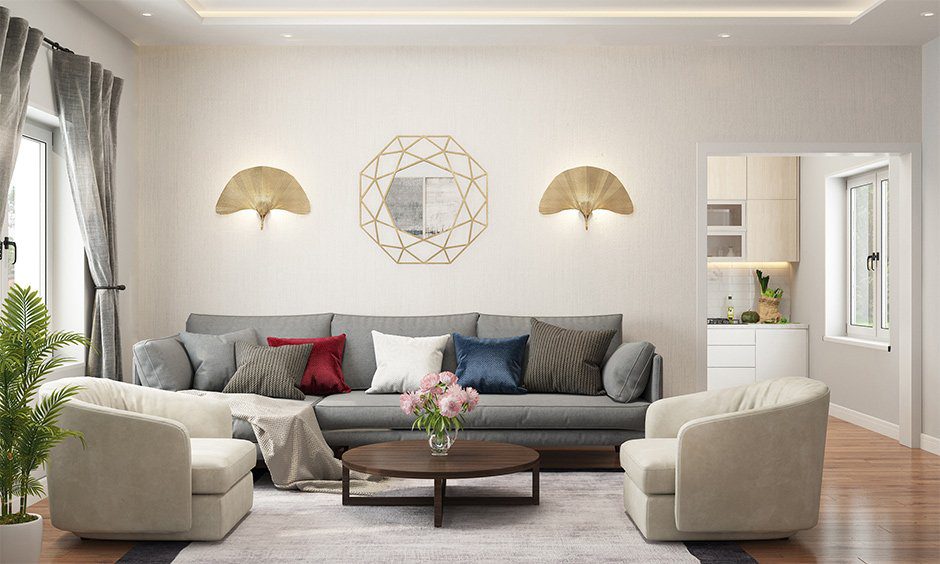
How to Select Decorative Wall Lights?
Choosing decorative wall lights that complement your home’s existing style is in fact a great thing for achieving a cohesive and visually appealing interior.
The style of your lighting fixtures can influence the overall feel of a room and design narrative.
For a traditional home, why not think about wall lights with ornate details, warm metallic finishes like brass or bronze, and classic silhouettes?
Modern and contemporary spaces thrive with wall lights featuring clean lines, minimalist designs, and sleek metal finishes such as chrome or brushed nickel, or even glass.
If your taste leans towards the warmth and comfort of a rustic or farmhouse style, look for wall lights crafted from natural materials like wood and iron.
The iconic mid-century modern style often calls for wall lights with brass accents and uncluttered designs.
For a touch of glamour, glam or Art Deco-inspired wall lights, featuring luxurious materials, geometric patterns, and reflective surfaces, can add a dramatic flourish. Homes with a coastal theme might incorporate wall lights made from natural materials like rope or driftwood, often with nautical motifs and light, airy colors.
Beyond the overarching style, pay attention to the specific material, finish, shape, and size of the wall lights in relation to your existing fixtures and furniture.
Decorative Wall Lights: Mistakes to Avoid!
While decorative wall lights can be a significant asset to your home’s design, several common mistakes can diminish their intended impact.
One frequent error is choosing the wrong size of wall light for the space.
Fixtures that are too large can overwhelm a small room, while those too small may not provide adequate illumination in a larger area.
Another common mistake is disregarding the existing décor style, leading to visual disharmony.
Improper installation height is another pitfall; placing lights too high or too low can reduce their effectiveness and even cause uncomfortable glare.
Furthermore, the type of light bulbs used also matters significantly.
Selecting bulbs with an inappropriate color temperature or wattage can negatively affect the light’s appearance and the room’s ambiance.
It’s generally wise to opt for energy-efficient LED bulbs that offer a natural light tone. Relying solely on wall lights as the primary source of light in a room is often insufficient.
It’s best to incorporate wall lights as part of a layered lighting scheme that includes overhead and task lighting.
Don’t overlook the quality of materials used in the fixture.
Substandard materials may lack durability or be unsuitable for certain environments, like bathrooms.
Bottom Line
Decorative wall lights are, let’s say, more than just “decorative”!
They have become powerful design elements that can significantly impact the ambiance and value of your home.
Try to understand the different types, strategic placement, and styles of these fixtures alongside their pitfalls.
Think of each fixture as an investment in your property’s appeal and your own enjoyment of your living space.
With Blink Lighting, you can choose wisely, illuminate strategically, and watch your home shine!
Frequently Asked Questions (FAQs)
What’s The Real Difference Between a Wall Sconce and a Wall Lamp?
While the terms are often used interchangeably, technically, a wall light typically has a covered light source, often with glass, whereas a sconce traditionally does not.
Where Are the Prime Spots to Install Wall Lights in a Living Room for Maximum Impact?
Consider placing them at eye level for general ambiance, above or beside artwork to highlight it, in reading corners for task lighting, on empty walls as decorative accents, or near windows.
What’s the Sweet Spot for Wall Light Height?
Generally, aim for the center of the fixture to be 60 to 72 inches (5 to 6 feet) from the floor. However, this can vary based on the room, ceiling height, and the light’s intended use.
Can I Rely Solely on Decorative Wall Lights to Illuminate a Room?
While they add valuable light, decorative wall lights are typically best used as part of a layered lighting scheme. Combine them with overhead and task lighting for optimal brightness and to avoid shadows.
How Do I Ensure the Style of My Decorative Wall Lights Complements My Existing Home Décor?
Consider the existing style of your furniture and finishes. Traditional homes often suit ornate lights with warm metals, while modern spaces pair well with sleek, minimalist designs.

